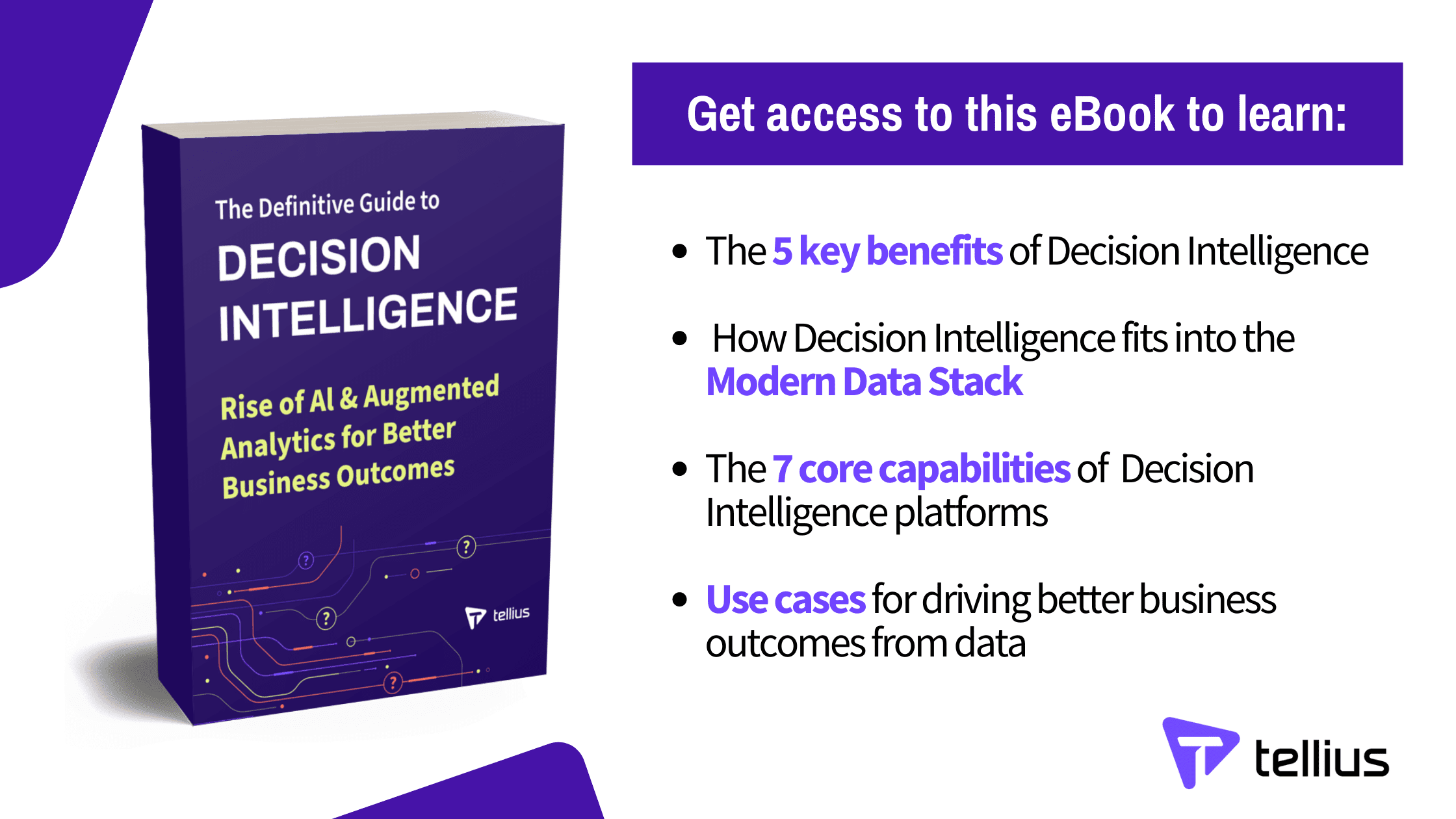Cloud Analytics: Unlocking the Next Level of Data Intelligence


Cloud analytics gives organizations both an easy way to store, manage, and share data, and a fast way to then generate instant, intelligent insights from that data. With cloud analytics, businesses can gain insights and make data-driven decisions to improve their operations and drive growth.
Overall cloud adoption is growing like crazy: For 2023, Gartner predicted a 20% increase in global end-user spending on public cloud services, growing from over $490 billion in 2022 to nearly $592 billion this year. Despite persistent macroeconomic concerns—inflation, layoffs or hiring freezes, slowing company growth, and the like—affecting overall business spending, migration to the cloud is “not stopping,” according to Sid Nag, vice president of cloud services and technologies at Gartner.
“Cloud computing will continue to be a bastion of safety and innovation,” he said, “supporting growth during uncertain times due to its agile, elastic, and scalable nature.”
Concurrently, as the demand for cloud computing grows, so too does the need for more granular, data-driven insights within every organization. From backwards-looking to quarterly reporting, to forward-looking, predictive, and prescriptive insights, organizations are using cloud analytics to usher in a new era of data intelligence. With the power of AI and automation, the future is bright for cloud analytics across business functions.
What is cloud analytics?
Cloud analytics is a service model of interpreting large amounts of data stored in the cloud so that organizations can gain better insights, make more data-driven decisions, and, ultimately, improve business outcomes.
Compared to on-premises analytics—or even legacy cloud analytics solutions—modern cloud analytics is evolving to deliver a superior user experience to business and data teams, augment data intelligence with AI and automation, and scale with elasticity, regardless of the number of users or amount of data analyzed.
Why are organizations turning to cloud analytics?
AccessibilityEnabling improved collaboration and data-sharing, cloud-stored data is easily accessible to stakeholders across an organization. Working from one centralized location in the cloud, teams can more quickly make data-driven decisions, regardless of their geographical location.
Scalability
Because they can handle data of any size, cloud analytics solutions can easily scale up or down to meet an organization’s changing needs, no matter how large or small their data analytics requirements.
Cost-savings
Cloud analytics solutions are often offered as a service, meaning costs are based on usage (rather than a one-off investment). This results in lower upfront costs and reduced operational expenses compared to on-prem solutions (i.e., data analytics tools and solutions that are installed and run on the user’s own physical premises or on local servers).
BI and AI capabilitiesWhen organizations incorporate modern business intelligence and artificial intelligence capabilities into their cloud analytics solution, they empower business users, analysts, and data science practitioners to have a comprehensive analytics workflow.
SecurityBecause of the mass amount—and often sensitive level—of data being stored in the cloud, cloud providers invest heavily in security to lower risks and comply with regulations. Because of extensive security measures in place, including required Software as a Service certifications, organizations can better ensure the security and privacy of their data.
Up-to-date technologyCloud providers typically upgrade their offerings on a continuous basis, ensuring that users have access to the most modern data analytics capabilities—as opposed to committing to a separate, significant investment in newer software or hardware.
Get started fast
Unifying data from multiple sources, cloud analytics solutions offer intuitive processing applications, such as pre-built data prep capabilities. When users can automate data cleansing and profiling tasks, they can drastically speed up deployment, as opposed to using multiple tools and steps to aggregate data and create KPI metrics.
Where organizations are moving data to the cloud
As companies increasingly adopt a modern data stack, cloud data warehouses and data lakes have become the optimal place for them to store and process data for analytics and drive more data-driven decisions.
With a data warehouse, companies can not only store but also extract, clean, and consolidate mass amounts of data from multiple sources into one single repository.
For the modern data stack, organizations can make use of a decision intelligence layer that sits on top, enabling business users and analysts to quickly and easily understand what’s happening with business metrics. This layer accelerates the discovery of these business insights from terabytes of unaggregated data by analyzing the data inside cloud data warehouses like Snowflake, Google BigQuery, Amazon Redshift, or Azure.
Or, like a data warehouse, a data lake is a centralized repository that can store a vast amount of data from across sources, but unlike a data warehouse, the data is in its raw or only semi-structured form: i.e., it’s not processed or cleaned. To analyze the data in a data warehouse, organizations can use SQL-based analytics, machine learning, and other BI tools, depending on their needs.

Each of these layers of the modern data stack plays a key role in an organization’s goal to get better insights from data and uncover new opportunities for growth.
Modern cloud analytics: data exploration and AI-driven insights
Even after consolidating their data sources on a cloud data platform, many organizations still struggle to meet the demand for data intelligence. Some rely on visual or manual analysis tools to uncover insights, and some rely on data specialists, who write custom code in SQL or Python or use a mixed bag of tools to carry out data transformation, machine learning modeling, and visualization for sharing across the business.
But when you’re looking for a modern experience for your business users to take advantage of your cloud environment, you’ll find that they don’t want to use several different pieces of technology to get to an answer. Disjointed tools and processes can hinder efficiency, slow down the discovery of insights, and create a backlog of information requests.
Thus, investing in a solid cloud data foundation is a necessary step in an organization’s need to become more data-driven—but knowledge workers of today want more.
Now, it’s about giving more people access and capabilities to explore data and answer questions on their own, rather than just porting old BI reporting processes to the cloud.
Enter AI-powered decision intelligence. Making use of processing power to give deeper insights from the data, decision intelligence enables organizations to get answers to what, why, and how types of questions by applying the latest machine learning and automation technologies:
Get the full picture of what’s happening in the business, uncover the reason why metrics change, and get specific recommendations for how to improve business outcomes.
Modernizing cloud analytics and going beyond BI, decision intelligence focuses on change, as opposed to snapshots in time, with outputs that are based on complex data relationships. It uses machine learning and modern cloud data platforms to take all data into account and returns answers in minutes that could take analysts hours or days to find, especially at an organization with limited resources.
Decision intelligence shortens the time it takes to find key insights into your data while making it easier for anyone to access the information. A decision intelligence platform can help unlock the potential of your cloud data warehouse deployment, all without having to move any data.

What to look for in a cloud analytics solution
Cloud-native
The beauty of cloud-based devices is that there’s no need for on-premises infrastructure, which can often be costly or unrealistic for many organizations’ needs, especially in the increasingly remote or hybrid business world.
Instead, cloud-native infrastructure leverages the power of cloud computing, enabling users to have monumentally easier ways to store and access their data.
Unlike traditional platforms that are often built considering a scarcity of resources, the cloud offers unlimited capacity for how you both store and process data, giving businesses the opportunity to run an unprecedented number of workloads, both at high performance and in a centralized platform.
Ease of use
As modern consumers with mobile phones, tablets, laptops, watches, and other smart devices with cloud-stored data, every one of us has an entire world of knowledge at our fingertips and in one easy-to-access hub, no matter the device.
Similarly, with cloud analytics, all data is stored in one centralized location, eliminating siloed storage and enabling access across all business users. As long as they have an internet connection, they can access their cloud-stored data.
Unaggregated data
Organizations can use the size and scalability of a cloud analytics platform, combined with the power of decision intelligence, to generate AI-guided insights from terabytes of unaggregated data.
When you combine the power of decision intelligence with the size and scalability of cloud analytics, you can generate powerful analyses within cloud data warehouses to make data-driven decisions.
Flexibility of data processing
Using a decision intelligence platform, organizations can leverage a cloud data warehouse for processing without the need to move data. If their needs change, the cloud analytics solution enables them to flexibly support any level and volume of data processing.
Decision intelligence / AI and BI
When organizations incorporate modern business intelligence and artificial intelligence capabilities into their cloud analytics solution, they empower business users, analysts, and data science practitioners to have a comprehensive analytics workflow.
Without needing to rely on data experts, users can combine data from multiple sources and deliver diagnostic and proactive intelligence at scale.
Mobile
Cloud analytics enables improved collaboration and data-sharing, partially because the data is easily accessible across devices, including mobile. This easy accessibility—meeting users where they are—enables teams to work together more efficiently and make data-driven decisions more quickly.
Elasticity
Using cloud analytics, users are able to add additional processing resources when they need them (and vice versa when they don’t). When you’re running many jobs, for instance, you need to be able to add resources to handle additional loads and spikes in demand, and then bring down those resources when there’s less activity. That’s what cloud analytics affords you to do.
Unlimited users
When it comes to how many people can use a cloud analytics platform, the limit does not exist. Companies of any size, from smaller start-ups to global enterprises, can enable their users to discover meaningful insights from one centralized location in the cloud.
Deployment options
Your cloud analytics experience should be scalable, automated, and available on-demand. With a microservices-based deployment, it can also scale up or down to meet a business’ needs.
Users should be able to get access to the information they need without having to pay for large servers that they might use only a small fraction of the time.
Learn more about using Tellius for cloud analytics
The cloud continues to shape expectations for how companies work, as well as how users interact with technology.
This is especially applicable in the world of data analytics: In our cloud-native era, volume is no longer a limiting factor to what—and how much—data can be stored and analyzed. With the cloud making it so easy to store data, companies are continuously looking for faster ways to surface and uncover more insights from that data.
To learn more about the benefits of cloud analytics combined with decision intelligence, check out our demo, Cloud Analytics: Data Exploration and AI-Driven Insights At Scale.
Get release updates delivered straight to your inbox.
No spam—we hate it as much as you do!

Related blog posts
Tool and strategies modern teams need to help their companies grow.
